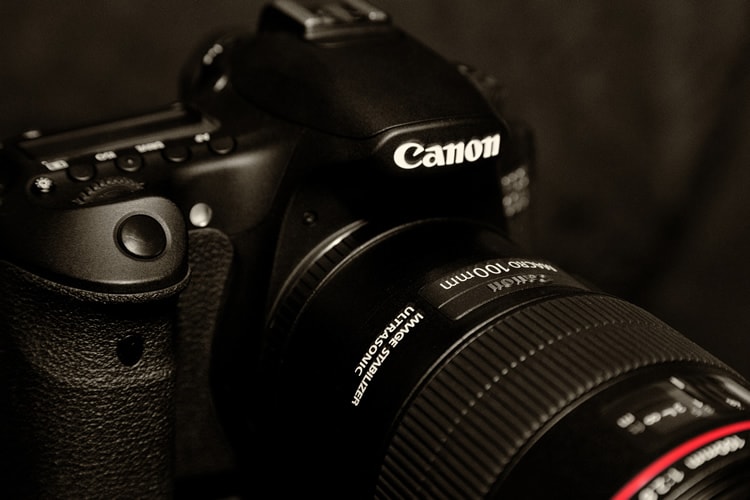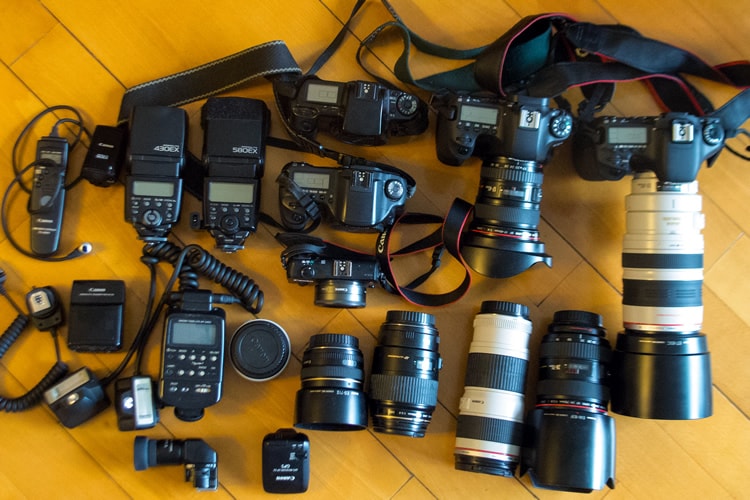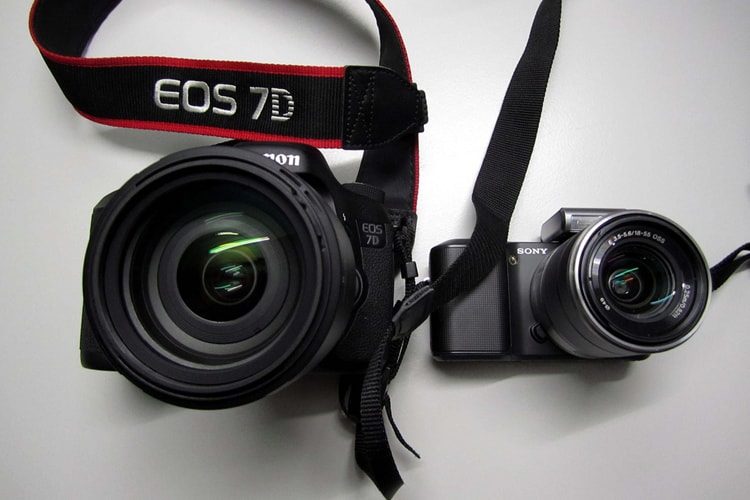All Change? A Look at the Landscape of DSLRs
Ever since the first digital cameras became commercially available, the technology has moved along at an alarmingly quick pace. For those of us who work as pros, it’s a given that the minute we buy a DSLR of any shape or size it will become obsolete. But, of course, as pros we must keep up to date with technology and make sure that we are using the right equipment for the job.
For many of us, this will mean using top end DSLRs by either Canon or Nikon, both of whom have had market dominance for some years. Canon and Nikon were the major players back in the days of 35mm film, meaning that there are a wealth of lenses to choose from.

photo by Markus Grossalber
And, until fairly recently, the two manufacturers were light years ahead of other DSLR makers in terms of quality and features.
Constant Innovation
But with the constant innovation of digital technology, no one camera maker can rest on their laurels! One of the most popular types of camera nowadays is the bridge-style, with interchangeable lenses, electronic viewfinder, and more compact sized bodies. Most of these are mirrorless, meaning that the image is captured directly onto the image sensor, without using the traditional mirror of DSLRs.
What this means in practice is that you can only preview the images on the LCD screen or through an EVF, which can be hard to see in low light and produces somewhat grainy and noisy results.
Now, some manufacturers are starting to produce serious mirrorless alternatives to traditional DSLRs. Fuji, who have already hit the mirrorless market hard with their brilliant X Pro-1 are now producing the XT-1, which is a traditional APS-C style camera with the aforementioned mirrorless approach. And Sony has the A7 line, which is their full frame mirrorless option. These cameras offer the same resolution as many of the top of the range DSLRs, but are still lighter and more compact than them. Both are half the weight of the Canon 5D Mk III, for instance.
Is Weight An Issue?

photo by See-ming Lee
These cameras are starting to become very popular with a certain sector of pros, for whom weight is a crucial issue. A lot of pros don’t want to be lugging around heavier equipment, but still need the features that these cameras offer. They seem like the ideal compromise in this situation and they still give a good impression to clients, as they are sizeable beasts!
I must admit though that I still have my reservations. I absolutely adore some of the mirrorless cameras such as the Fuji X Pro-1 and the Panasonic Lumix G range. They’re extremely clever little cameras –– packing a lot of pro features into a tiny body and offering some decent lenses.
Some Drawbacks
I recommend them to a lot of enthusiasts and have used them myself for fun, but I wouldn’t take them out on a paid shoot. And the new generation of almost full sized mirrorless options have a lot of the same drawbacks. Although the electronic viewfinder offers the same viewpoint as a traditional DSLR viewfinder, the quality just isn’t there (yet).
This also leads to issues around focusing – these cameras just aren’t as quick as DSLRs – at least not that I could find in my own testing. These cameras also have a limited number of lenses, although ranges are expanding all the time. But it is unlikely that they’ll ever match the sheer number of lenses available to those of us using Canons or Nikons.
Technology is Evolving

photo by Acid Pix
Of course, the technology is evolving all the time and I have no doubt that these new types of mirrorless cameras will continue to improve as time goes by. For some, they are already a viable alternative to traditional DSLRs and I foresee that they will gain more popularity as features start to improve.
Really though, the choice of whether a pro photographer uses a DSLR or a mirrorless alternative comes down to horses for courses at this stage. After all, full-frame mirrorless cameras are a reality now. To my mind, these cameras are not quite there yet and I rely on the features of my Canon and especially the range of lenses available to complete my work to the standard I deem applicable.
But there is also the personal choice in my case, in that I love the colours my 5D Mk III produces and admit to being ever so slightly obsessed with the images I get from my 50mm lens. It would take a lot to drag me away from that but, having been a huge fan of Fuji colour slide films back in the day, I would never rule out a Fuji mirrorless for example. As with all digital technology, it will be fascinating to see where we go next.
